7 Reasons You Have a High Turnover Problem
Written by Megan Hamilton
August 25, 2022
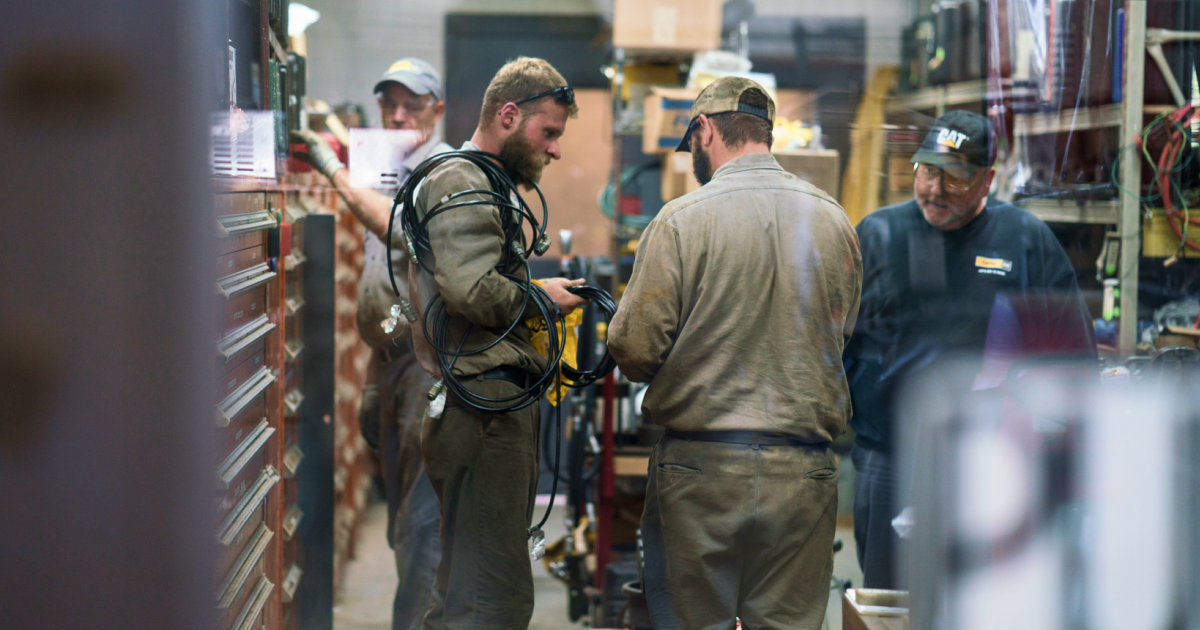
In 2021, millions of Americans quit their jobs. The media called it The Great Resignation, and it hit the Dirt World hard. From September to December, 789,000 construction workers quit their jobs.1 In 2022, the industry faced a projected shortage of 650,000 workers.2
People quitting is a symptom of an even bigger problem: 52% of manual laborers are unsatisfied with their jobs.3 And the next generation isn’t rushing into the industry.
"This needs to change. We cannot continue the status quo, because by the day we’re only screwing ourselves further and further,” says Aaron Witt, BuildWitt CEO.
The workforce shortage will keep getting worse until companies understand that they’re the ones causing it—and the ones who can fix it. “No one’s coming to save us. We’ve got to save ourselves here,” Aaron explains. “What we’re doing is clearly not working. We need to go beyond what we’ve done up to this point.”
It’s more important than ever to take care of your team in a way that retains current employees and attracts new ones.
So, how do you stop high turnover? You learn what causes dissatisfaction—and then you start resolving those issues within your company. Let’s look at seven major causes of high turnover and what you can do about them.
01Low pay
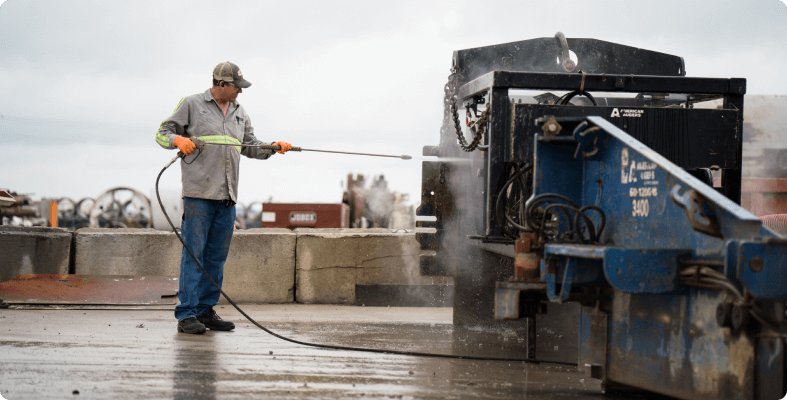
Low pay was the biggest reason people quit their jobs in 2021. Of those who quit, 37% said pay was a “major reason,” and 26% called it a contributing factor.4
People in the Dirt World make everything our society needs to function. They work long hours doing demanding, often dangerous jobs. They deserve to be paid according to how much their work matters! But are they?
Consider the median yearly salaries for a few construction jobs in 2021:
|
Job |
Median Yearly Salary* |
|
Laborers |
$37,7705 |
|
Pipelayers |
$45,9806 |
|
Operators |
$48,2907 |
|
Mining or geological engineers |
$97,0908 |
|
Heavy civil construction managers |
$100,3109 |
*Median salaries give us a more accurate idea of what people earn than average salaries. That’s because a few high (or low) salaries can make the average look higher (or lower) than it really is. The median salary is the true midpoint.
For comparison, the national median across all occupations was $45,760.10 When you think about how much skill and physical stress goes into Dirt World jobs, it’s crazy that these blue-collar workers aren’t getting more compensation.
Now, you don’t have to be the highest-paying company in your area. You just have to pay people fairly. These hard-working men and women have to make a living. Paying your workers well relieves stress and lets them know that you value them, which is great since you value them!
If you can’t afford to give raises, bonuses can be a great way to let your team know you appreciate their work. Money is the most sought-after reward for a job well done, yet 25% of construction workers say they don’t get financial rewards.11 A bonus here and there can make a real difference.
That said, pay alone won’t solve the workforce problem. Like Aaron says, “Raising wages is a temporary solution. That’s not what’s going to inspire the next generation to work in the Dirt World.”
People want more than a paycheck. They want to be treated right. Which brings us to . . .
02Subpar benefits
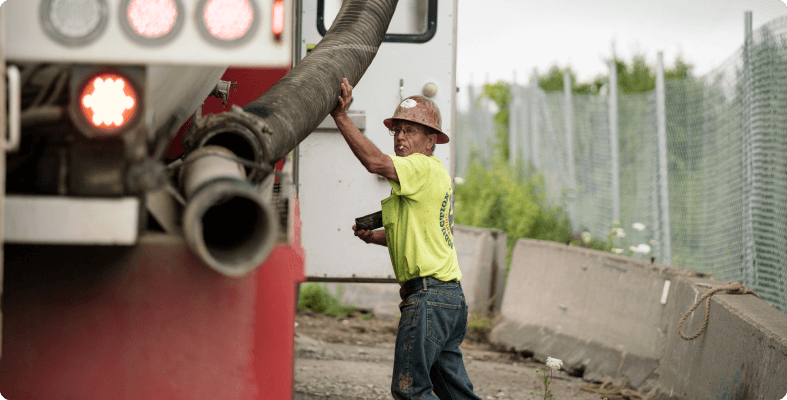
Benefits include everything you do for your employees beyond their paychecks, like:
- Health, vision, and dental insurance
- Paid time off
- 401(k) accounts and matching
- Profit sharing
- Fun company events
- Disability insurance
- Life insurance
- Continued education
- Professional development
- Flex time
When you hire an employee, you hire a whole person. Your team members need to be able to bring their sick spouse to the doctor or take a day off for their kid’s birthday. They need to know that you’ll help them plan for retirement—or that your insurance will take care of them if they get hurt on the job.
Will Schuler of Will Power Excavation says he lost many good workers by running them ragged. Now, he’s cutting down on turnover by treating them right and offering benefits like 401(k) matching and unlimited paid vacation time.
Hear the details about how Will cut down turnover and created a great workforce.
A study on work-life balance
Now, if you think our friend Will is off his rocker or that unlimited paid vacation could never work, think again.
Your team members all have lives outside work. The early mornings, late nights, and long days in the Dirt World can make it hard for them to get home to their families. That’s a big reason construction workers are quitting their jobs.
In 2017, one in five construction companies lost workers to another industry.12 And that was before the pandemic made working from home easier than ever. It’s no wonder the Dirt World is losing more workers to tech!
To combat that, four construction companies in the U.K. let their employees use flex time. Now, you’d think it would hurt the businesses if employees worked fewer hours, came in late, or left early, right? Wrong!
By the end of the study, none of the businesses had reported any negative impact on their budgets or schedules. Yet 84% of employees felt like they finally had enough time for their own wellbeing (up from 48% before).13 Morale went up, and when morale is up, turnover goes down.
When you’re trying to reduce turnover, it’s okay to start with the obvious—pay people well and treat them like you care.
That said, benefits aren’t the be-all or end-all of employee retention. It’s like Jason Schroeder, BuildWitt Leader and owner of Elevate Construction, says, “Don’t get me wrong. I love buying the foosball tables and the golf trips and lunches and candy and stuff. But at the end of the day, I don’t think that’s what people are looking for.”
So, what are your employees looking for—and what else is driving them away? A lot of it comes down to company culture.
03Bad culture
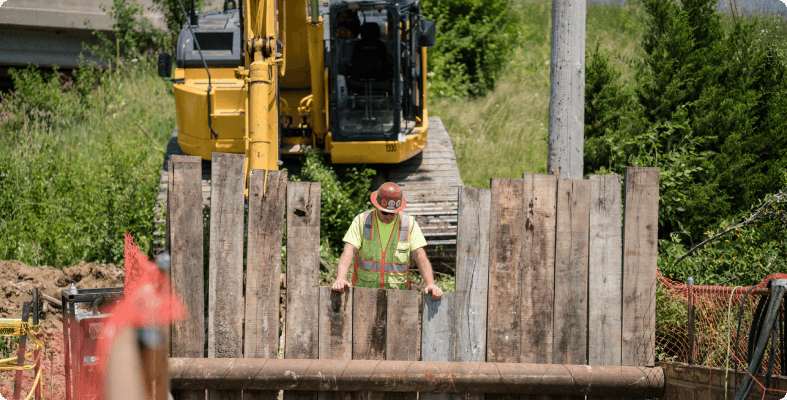
Another BuildWitt Leader and construction company owner, Randy Blount, sat down with Jason to talk about company culture. Specifically, they discussed how to create good culture and why it matters. (You can watch their full talk here.)
What is company culture?
Jason calls culture the “common beliefs and actions” in a company. For example, here at BuildWitt we believe people matter. When somebody on our team is dealing with life or a client has a pressing issue, that comes ahead of productivity and profits. Our belief that people matter means we act like people matter!
Beliefs and actions are very different than writing down a list of values the team feels no connection to. Some companies say things like, “We take pride in our work.” But then their team treats the equipment like trash and leaves the jobsite messy.
That’s bad culture—when beliefs and actions don’t line up.
How bad culture creates turnover
Bad culture makes it harder for companies in the Dirt World to compete with tech and other “sexy” industries, as Randy calls them.
Jason added, “I don’t think the kids coming out of school are lazy. I don’t think they are different. I don’t think they’re greedy. I think . . . they’ve been told to go live a life of worth and meaning.”
People want more than just a job. They want to be part of something bigger than themselves—a mission. They want to feel good about their work.
What’s sad is that 56% of construction workers don’t feel like their work is meaningful.14
That’s crazy! These people literally build what our society needs to survive, and they don’t feel like it matters. Why? Because it’s hard to feel good about your work when people yell at each other, harass the women on the jobsite, abuse the equipment or just plain act like they don’t care about the project or people.
Bad culture breeds disloyalty. People don’t want to be part of something that makes them feel like crap. So if the Dirt World wants to stop losing people, companies need to start changing culture.
Changing company culture
Bad culture is often company-wide. Everybody has an attitude of, “Well, nobody else cares. Nobody else goes the extra mile. Why should I?” That said, sometimes one person can bring down a whole team.
In a way, dealing with one person is easier. You can have an honest conversation with them to find out what’s wrong and make a plan to change it. Either they follow the plan, or they don’t.
When bad culture has seeped into the whole company, it takes strong leadership to cast a vision for what you want the culture to be like and to lead the team toward that by example.
You can start by answering one simple question: “Why should I work for you?”
When you have a defined “why,” people want to be part of it. Turner Mining Group, one of the first companies BuildWitt worked with, got thousands of young people to apply for jobs there.
“They had a clearly defined higher purpose,” Aaron explains. “The Dirt World is the foundation of society, but are you talking about that? Does everyone at your company know why the heck they show up to work every day?”
If not, it’s time to tell them.
04Poor leadership
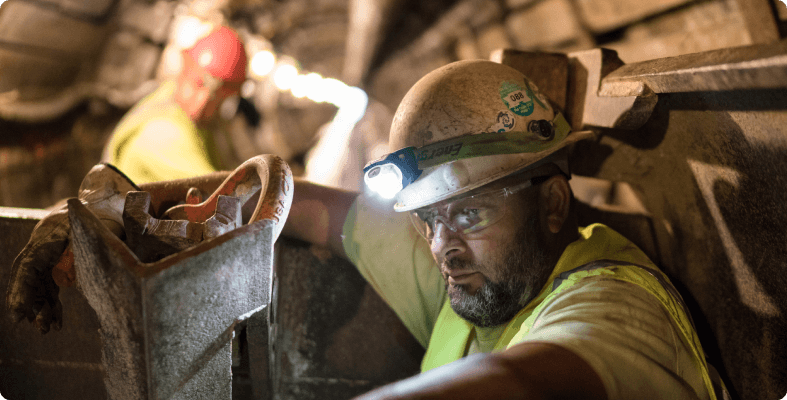
As Randy Blount likes to say, “All problems in business are leadership problems.” Leaders have to take extreme ownership and realize high turnover is often a symptom of poor leadership.
Relationships with direct supervisors are one of the biggest factors in turnover. Of the people who quit their jobs in 2021, 35% said feeling disrespected at work was a major reason they quit. Another 21% said it was a contributing factor.15
Who’s most likely to disrespect workers? Their direct supervisors. Here are some of the top mistakes supervisors make that push employees away:
- Berating employees for mistakes. No one wants to get yelled at or talked down to—especially in front of others.
- Setting unclear expectations. There’s an old saying, “To be unclear is to be unkind.” Leaders who don’t tell their teams what’s expected set those teams up to fail.
- Not telling employees who can help them. On the jobsite, things will break or go wrong. The leader has to make sure everyone knows who to ask for help when they need it. Otherwise, employees can get frustrated, injured, or worse.
When leaders in the field or office disrespect their teams in these ways, work becomes a burden to avoid—not a mission to be part of.
On the flip side, team members are insanely loyal if they have a great supervisor. Supervisors who trust and value people are rare, and employees know they won’t find that just anywhere.
05Job security
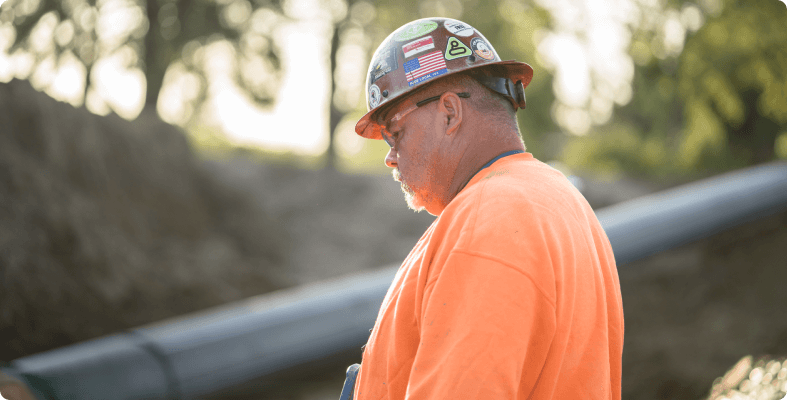
People want to know that their employer won’t kick them to the curb when times get tough. But in the construction and heavy civil industries, that’s not always how things work.
Project funding can fall through and leave workers hanging. Natural disasters or regulatory changes can sideline production. Many companies shut down during the pandemic, and leaders didn’t have the funds to keep their employees onboard.
It’s no wonder that 16% of manual laborers say they’re likely to be laid off within the next year.16 They’ve been laid off before, or they’ve seen it happen to friends and family. Now they’re wondering when it’ll happen again.
The Dirt World may never fully eliminate layoffs. But you can run your business in a way that leads to growth—even in tough times—and gives your team more job security.
06No growth opportunities
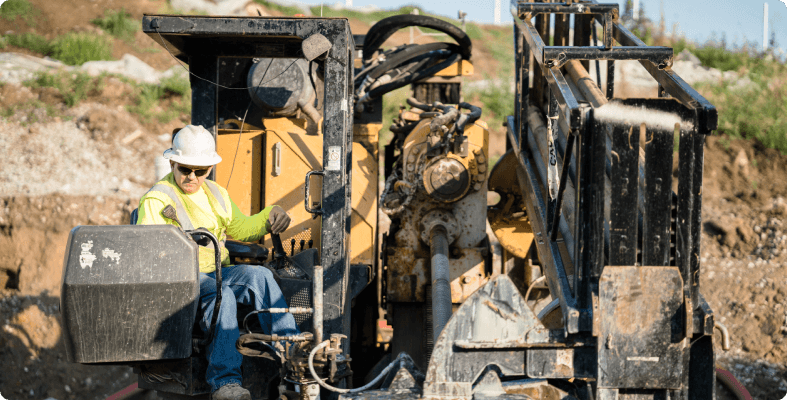
Almost two-thirds of people who left their jobs in 2021 felt like they had no opportunities to grow at work.17
Now you might be thinking, I can’t give everyone a promotion or That person isn’t ready for leadership. But what if we told you that not everyone who wants to grow is bucking for a promotion?
Researchers at Oregon State University found that construction workers want four types of career growth—financial, personal, developmental, and social.
|
Growth Type |
What It Includes |
Importance (according to employees) |
|
Financial |
Base pay, bonuses, and performance-based pay |
Ranked #1 |
|
Personal |
Responsibility, job challenge, task variety, job importance, and autonomy |
Ranked #2 |
|
Developmental |
Promotions, learning, training, professional development, and succession planning |
Ranked #3 |
|
Social |
Flex time, fitness and wellness programs, company events, and other benefits that help with company culture and work-life balance |
Ranked #418 |
We’ve already talked about money, so we won’t revisit that. Instead, look at what’s next on construction workers’ wish lists—personal growth at work.
People want to work in the Dirt World; they just want to do work that interests and challenges them. They also want responsibility. In fact, that was the highest-ranking personal reward.19 Translation: After money, your workers crave responsibility the most.
From a leader’s perspective, that can sound daunting. How will you know if workers can handle that responsibility? By training them properly.
This brings us to the last reason for high turnover: poor training.
07Poor training
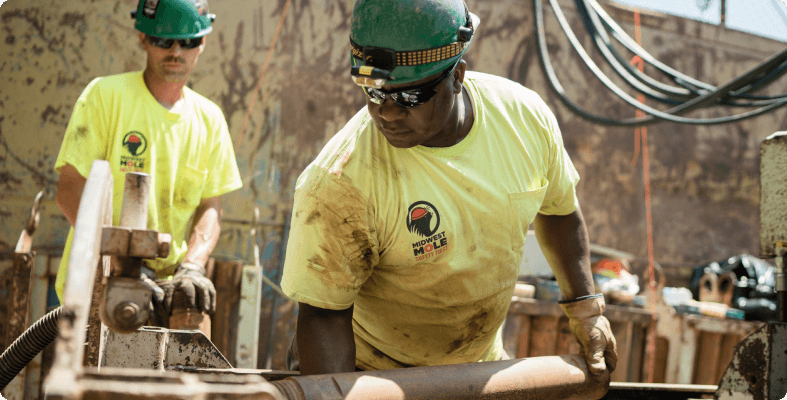
When employees don’t know what to do on the job or how to do it, it creates a productivity problem. It’s also dangerous. Safety hazards and mistakes are two of the surest signs you have a training problem.
Another indicator? Half of construction workers aren’t satisfied with how well they can use their skills on the jobsite.20 They’re driven to succeed—but they’re missing the resources or knowledge to do their best work.
Your people need training to grow their current skills, use the equipment, and learn how to do new things. Leaders need additional training on team management, project oversight, and culture building. And if you ask, they’ll tell you all this themselves.
Fixing your high turnover problem

High turnover isn't a black mark on your company. Plenty of industries are experiencing workforce issues, but turnover is preventable.
Learn how to fix high turnover in your construction business so you can focus on building a company you can be proud of.














